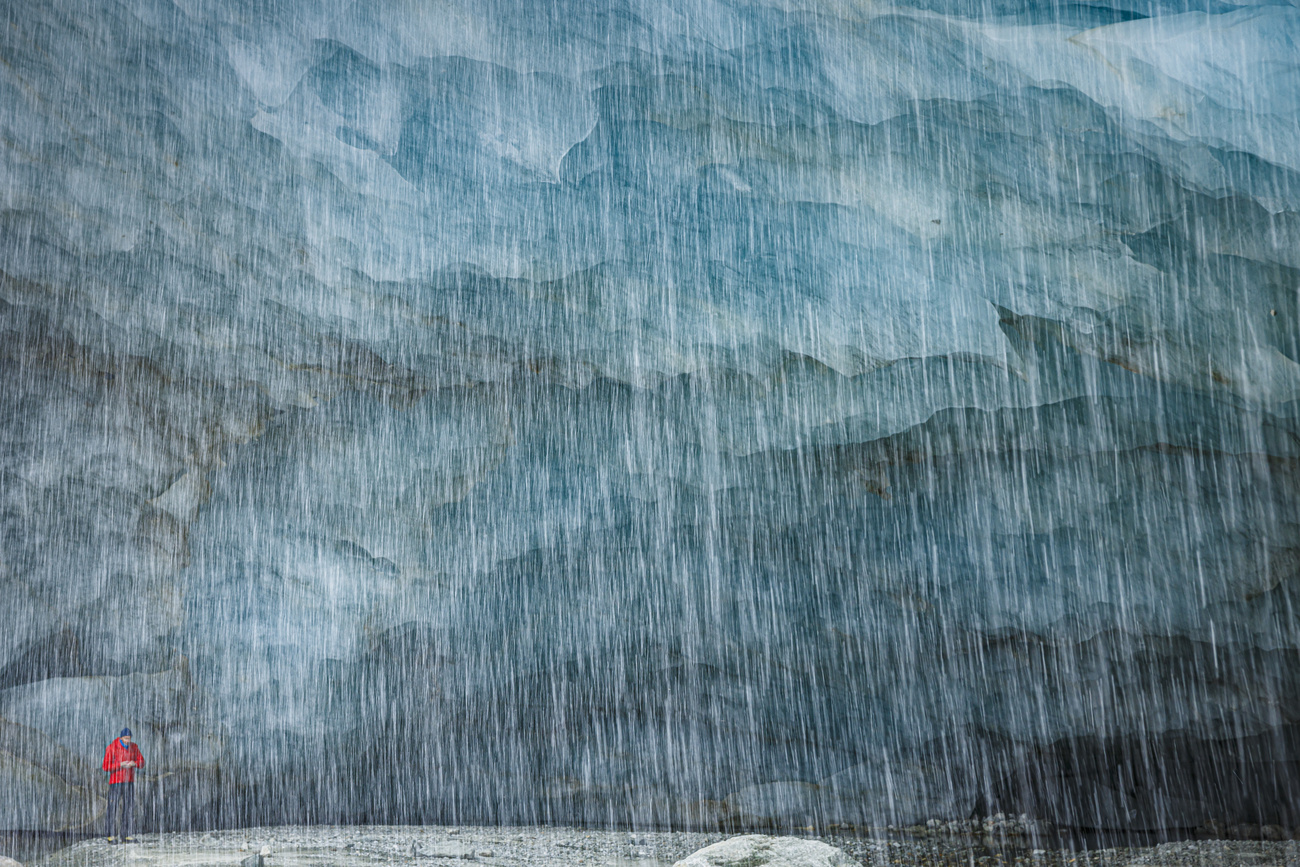Going on a Swiss bear hunt

swissinfo went in search of the first wild bear to be seen in Switzerland for more than 100 years - and was not alone.
The bear’s sudden arrival has been this summer’s big event, and has put the spotlight on the area where it reappeared – the Swiss National Park.
You would think by the amount of excitement caused by the large predator, that Switzerland was dealing with the return of Tyrannosaurus Rex, and not a common European brown bear.
But no matter how ludicrous it may sound, I convinced myself before setting out on my quest that there are parallels. Like the mass, sudden extinction of the dinosaurs millions of years ago, large animals disappeared from the Swiss Alps over a relatively short period.
In 1904, hunters killed Switzerland’s last bear in – ironically – the area that was to become the National Park.
It put the omnivore on a long list of animals which once roamed throughout the Swiss Alps but which lost their habitats through deforestation or were hunted into extinction, including the wolf, lynx, ibex and bearded vulture.
The bear, one of the most adored creatures in the world, was the last to go and has been the last to return.
The sighting of the bear that wandered across the border from Italy was greeted with euphoria in the Swiss media – as well as the towns and villages surrounding the park, which have seen their hotels fill up with binocular-toting tourists and journalists.
I joined them.
High-powered telescope
Armed with a high-powered telescope, park ranger Peter Roth (see video) leads me along a path through stands of mountain and stone pine. Rotting trunks lie scattered in the clearings.
Nature has been allowed to take its course in the 172km2 park since it was founded in 1914, and so the lush green forest of firs blanketing the slopes, as well as the absence of grazing pastures, makes it easy to mistake this part of the Alps for a Rocky Mountain wilderness.
Roth says this is why it is ideal bear country. We follow a trail close to where the bear was spotted. Roth has never seen a bear in his 32 years working for the park, nor has he seen this one, but he is familiar with it as he would be a long lost friend.
As we search the undergrowth for signs of its presence, Roth says it probably feasted on wild cranberries and raspberries that thrive on the grassy floor, or could have stolen larvae from ants that take advantage of the plentiful supply of dead wood to build hills more than a metre high.
The park was not always like this.
There used to be many larch trees in the area, Roth says while planting the telescope tripod.
He tells me they were cut down in the Middle Ages to be shipped to the Adriatic where they were sunk into a swamp that would become Venice.
Later came iron ore mines, he continues, and more deforestation as wood was needed to fuel their furnaces.
Marmots and eagles
The ranger zooms in on a light-brown marmot guarding its hole. Through the course of the day, Roth spots golden eagles, chamois and red deer but the star attraction fails to make an appearance.
A brown bear can reach speeds up to 50kmh, and often travels 20km in a night.
The return of the large mammals such as the bear is confirmation that the country’s nature conservation policy is on the right track.
The ibex was reintroduced to the Swiss Alps shortly after the bear made its exit, and its population is stable. A few bearded vultures were released in the park in the 1990s as part of an Alps-wide resettlement project, and Roth wears a vulture feather proudly in his cap as a reminder.
The lynx was reintroduced to Switzerland about 30 years ago, and the wolf has returned in small numbers. Both have received a mixed reception, with livestock owners wanting them shot to prevent them preying on sheep, and animal rights activists demanding that shepherds or sheep dogs be deployed to protect the flocks.
Wait over
Late in the last decade, the park authorities published a booklet and opened a small museum dedicated to the bear.
But they did not draw up any plans to reintroduce it to the wild because they did not want to “create an island population with no contact to bears in neighbouring countries”.
“We’ve waited a long time for the bear’s return. We’re thrilled that after a 100 years, it’s back,” Ranger Roth says, as he spies a long gash on a dead tree trunk.
“This is the first time I have found a dead tree torn up like this,” he says excitedly, adding that only a bear could have ripped off such a large strip of bark to get at insects.
“I’d like to see the bear, but as a ranger I don’t feel that I should have joined the crowds who came to stare at it when it lingered for a couple of days on the road just outside the park. We shouldn’t disturb it,” he explains.
“But yes, I’d love to see it – back inside the Park.”
swissinfo, Dale Bechtel in the Swiss National Park
The bear entered Switzerland near the Swiss National Park in the southeast of the country, and scavenged for food within and around its boundaries.
The park was created in 1914, and is the only conservation area in the country where nature is allowed to take its course without human interference.
The park is home to 30 different mammal species, including the red deer, ibex, chamois, and marmot. The bearded vulture and golden eagle are the biggest of the 100 species of birds.
There are 80 km of hiking trails in the park.
The last wild bear to live in Switzerland was killed in 1904.
A brown bear that wandered into the country from Italy was sighted at the end of July.
It follows the wolf, lynx and bearded vulture which have been reintroduced or migrated into the country in recent years.
A bear symbol is found in the emblems of many Swiss towns and communities, including the Swiss capital, Bern, which is, according to legend, named after a bear.

In compliance with the JTI standards
More: SWI swissinfo.ch certified by the Journalism Trust Initiative












You can find an overview of ongoing debates with our journalists here . Please join us!
If you want to start a conversation about a topic raised in this article or want to report factual errors, email us at english@swissinfo.ch.